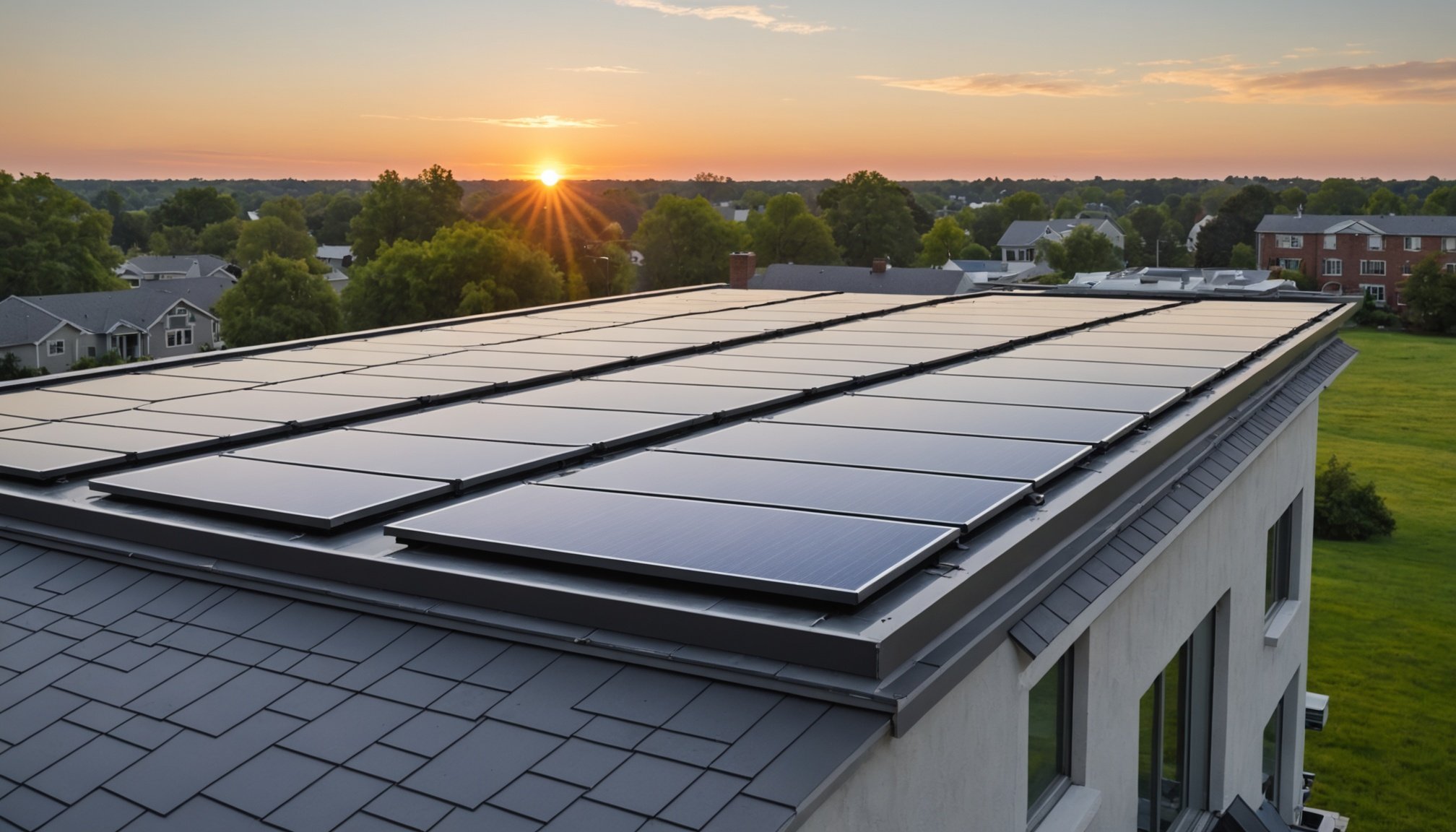Innovative Skylight Design Strategies
When it comes to skylight design, leveraging unique roof angles and strategic placement is key for optimising sunlight exposure. By angling skylights towards the sun’s path, architects can ensure maximal daylight capture, enhancing energy efficiency. Specialized glazing options further amplify this benefit, offering superior thermal performance.
Glazing choices vary from low-emissivity coatings to dynamic smart glass technologies that adjust to sunlight exposure. These options reduce undesirable heat gain during summer, yet retain warmth during winter, supporting year-round comfort.
Additional reading : Top DIY Fixes to Silence Squeaky Floors in Your Quaint Victorian Home
Integrating thoughtful shading elements also plays a significant role. Consider the incorporation of overhangs or blinds that can modulate sunlight penetration, reducing excessive heat during the hottest months yet allowing for passive heat during colder periods. This balance ensures efficient energy use by minimising heating and cooling demands.
Architectural creativity in skylight design not only transforms spaces aesthetically but also contributes to sustainability. As designers explore these innovative strategies, they merge functionality with visual appeal, offering a holistic approach to modern architecture.
Also read : Essential ergonomic features to look for when selecting your perfect customizable home office chair
Techniques for Maximizing Solar Heat Gain
Enhancing solar heat gain in skylight design is pivotal for both energy-saving techniques and elevating thermal performance. By understanding passive solar heating principles, designers can optimize heat retention naturally. This involves incorporating thermal mass materials, which absorb, store, and gradually release solar energy, aiding in maintaining comfortable indoor climates.
Adapting skylight designs to different seasons is another crucial strategy. In winter, maximizing sunlight penetration through southern-facing windows effectively captures and utilizes solar warmth. Conversely, during summer, strategic shading like awnings or retractable blinds prevents overheating while allowing for some warmth retention, thus contributing to temperature regulation.
Using thermal mass materials such as concrete or stone is essential for their ability to absorb excess heat during the day and release it when temperatures drop. This facilitates a balanced indoor climate and reduces dependency on electrical heating systems, ultimately enhancing energy efficiency.
Additionally, integrating natural ventilation, including operable skylights or vents, complements thermal mass for effective air circulation. This approach further maintains optimal indoor temperatures by allowing fresh air exchanges and reducing reliance on mechanical cooling, thereby supporting sustainable practices and energy-efficient systems. Together, these methods exemplify innovation in architectural creativity and functional skylight design.
Integration with Energy-Efficient Systems
Integrating skylights with energy-efficient systems can significantly bolster sustainable practices. This union’s potential goes well beyond simple illumination. Skylights can complement solar panels, enhancing energy generation by permitting natural light and reducing the need for artificial lighting. Innovatively designed skylights that include shading systems can further limit energy consumption.
Smart home technologies integrate seamlessly with skylights, offering various automation options. Imagine a smart skylight system that adjusts to the amount of daylight, temperature, and sunlight. This adaptability optimises indoor comfort while contributing to energy conservation. Moreover, motorised blinds for skylights can be programmed to act according to sunlight, weather changes, and time of day, providing dynamic control over indoor climate.
Skylights play a pivotal role in achieving net-zero energy goals. Buildings designed with this aim in mind often rely on strategic skylight placement and functional design to minimise reliance on electricity for lighting and climate control. Integrating modern technology with creative skylight design produces self-sustaining structures that harness natural resources, laying down the path towards a greener architectural future.
Case Studies and Real-Life Applications
Skylight installations highlight the ingenuity of modern architecture by balancing energy efficiency with architectural creativity. Exploring case studies reveals valuable insights into the role of skylights in both residential and commercial settings.
Projects like the California Academy of Sciences showcase the successful integration of skylights, leading to substantial energy savings. In this instance, strategically placed skylights reduce reliance on artificial lighting, emphasizing sustainability. Similarly, the Bullitt Center in Seattle models the practical applications of skylights, utilizing them to achieve remarkable energy efficiency measures and contributing to a net-zero energy status.
Lessons learned from diverse climates further underscore skylights’ versatility. In colder regions, architectural designs harness solar heat gain through specialised glazing and strategic orienting, maintaining thermal comfort without excessive reliance on heating systems. Conversely, in warmer climates, effective shading solutions and ventilated skylights manage the balance between sunlight and heat exposure.
These real-life examples illustrate the transformative potential of skylights, enhancing indoor environments while supporting sustainable architecture. The diverse functional uses affirm skylights as a crucial element in modern building design, merging aesthetic appeal with practical energy solutions.
Visual Inspiration for Skylight Optimization
Gain insights into skylight aesthetics and boost your visual appreciation with our curated gallery of creative skylight designs. This visual collection highlights the elegant possibilities that skylights offer, both in style and function. Included are diverse installation techniques that showcase the artistic creativity architects can achieve with skylights, transcending typical roof design constraints.
Infographic on Energy Savings from Skylights
An engaging infographic illustrates the tangible benefits skylights provide in terms of energy savings. By integrating skylights effectively, you’ll see a marked reduction in electricity reliance, translating to cost savings and enhanced sustainable practices. The infographic visually breaks down energy statistics into easily digestible data, offering a comprehensive overview of how skylights optimise energy use.
Testimonials from Homeowners about Skylight Benefits
Beyond design, hear from homeowners who have experienced the transformative impact of skylights firsthand. Their testimonials emphasize benefits like increased natural light, elevated home ambiance, and improved thermal regulation. These experiences underscore skylights as a vital component not only in aesthetics but also in boosting year-round comfort and energy efficiency.

